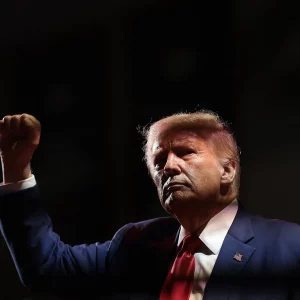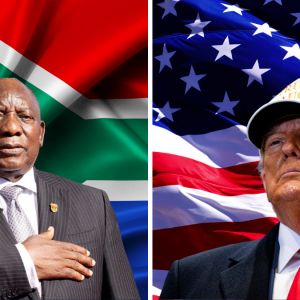BY GIACOMO TOGNINI
It has been seven years since Nepal’s decade-long civil war led to the overthrow of the world’s third-longest-lasting absolute monarchy and the victory of former Maoist rebels at the polls. Today, Nepal is undergoing a dramatic political crisis that shows no signs of abating before the Constituent Assembly (CA) elections in two months.
Beset with daily strikes, the country faces a tide of rising interethnic violence. The CA has an unspecified amount of time to produce a new constitution amenable to all parties, but in a field of over 20, three stand out: the center-left Nepali Congress, its traditional ally the “communists-in-name-only” Marxist-Leninists (UML), and the hard-left Maoists (UCPN[M]).
The country has now failed to produce a constitution in five years – the 2007 interim constitution only set a framework for cooperation, yet mistrust and egotistic ambitions have derailed the process.
A legion of smaller parties represents geographic areas or ethnicities, such as the Madhesi people. “Federalism is going to be very chaotic and violent,” remarks Mahima Himalaya Poudel, a Nepali citizen. “We are one of the most ethnically and linguistically diverse countries in the world – federalism for a small country like Nepal would be pointless.”
Violence is already spreading, according to Jitman Basnet, a prominent Nepalese human rights lawyer. “Nepal is being used more and more often as a haven for criminal gains that are behind sex trafficking, money counterfeiting, illegal gun trading and training fighters for regional gangs and insurgents.”
A greater regional problem also hampers efforts toward compromise. India and China have long jostled for influence over Nepal to indirectly counter one another. “Nepal is not fully independent itself economically which is one of the reasons for strong external influence in domestic matters,” explains Basnet. “India adopted a twin pillar policy towards Nepal, on one side supporting the monarchy and behind the scenes giving support to a democratic movement.” China, instead, has narrower interests and is “most concerned with the Tibetan issue, rather than economic control.”
Several issues characterize Nepal’s status as a proxy for the greater Sino-Indian rivalry: the problem of Tibetan refugees, the future of Nepali federalism, and economic investment opportunities. It is no secret that India is a supporter of Tibetan self-determination, but China’s growing influence has persuaded Nepal — which once viewed itself as inextricably linked with its oppressed northern neighbors — to harden its stance against Tibetan immigration and protests.
Indian politicians rely on the Nepali Congress-UML government’s traditional support base of well-connected high-caste Hindus. India has encouraged dividing Nepal into eleven language-based states — enough to grant autonomy to the key region of Madhesi-inhabited Terai, which it depends on for industry, but not enough to dilute their power base. China, fearing that granting autonomy to ethnic minorities would encourage rebellion among its Tibetan subjects, is slowly succeeding in changing the Maoist’s historical popular commitment to ethnic federalism to a more Chinese-friendly structure of states based on economically contiguous units. Now, “The Maoists [have] convinced people excluded from the mainstream Kathmandu-centered system that they would provide a system with autonomous federal states based on ethnic identity,” states Basnet.
Nepal’s citizens deserve a constitution that secures the existence of a secular, democratic, and federal republic. But faith is low in an electorate that has become all too used to political inaction and wrangling over personal interests.
“It is infuriating to think that all our resources are wasted on these selfish, incompetent politicians,” says Poudel. “I have no faith in them.” She, like many of her fellow Nepalese, stresses the importance of a strong, stable constitution rather than the wishes of every interest group in the country.
It remains to be seen how each party will interpret the seemingly benign ideas of democracy, secularism, and federalism. While nominally secular, the Nepali Congress clearly favors rights of Hindus, especially those of higher castes. True democratic values are difficult to reconcile with the UCPN(M)’s stated Maoist ideology. Federalism will be faced with considerable problems: significant cultural diversity, geographical complexity, a traditionalist mindset, and centuries of history as a unified country.
“The Nepali social structure was not as easy to change as the Maoists thought,” explains Basnet. “The basis of economic and social inequality in Nepal is not caste or ethnicity as many argue, but the class structure whereby a few elites in each ethnic community and caste have power through owning the majority of the land and the business interests in the country and therefore most influence in the political system.” He adds that all castes and ethnic groups, even the “upper caste” Chhetri and Brahmin, are oppressed.
A strong constitution is in the best interests of both regional giants. “India-China relations are secondary,” explains Kush Berry, an Indian citizen. “The ultimate goal that each nation should shoot for is stability in Nepal.”
How Nepalese parties resolve internal instability and play power politics internationally will determine what kind of constitution they will produce and what kind of legacy they will leave for future generations of Nepali citizens.
It is more than political fortunes that are at stake — it is the unity of an entire nation and the stability of Asia as a whole.
This article originally appeared in the Fall 2013 print edition, which can be found here.






Be First to Comment